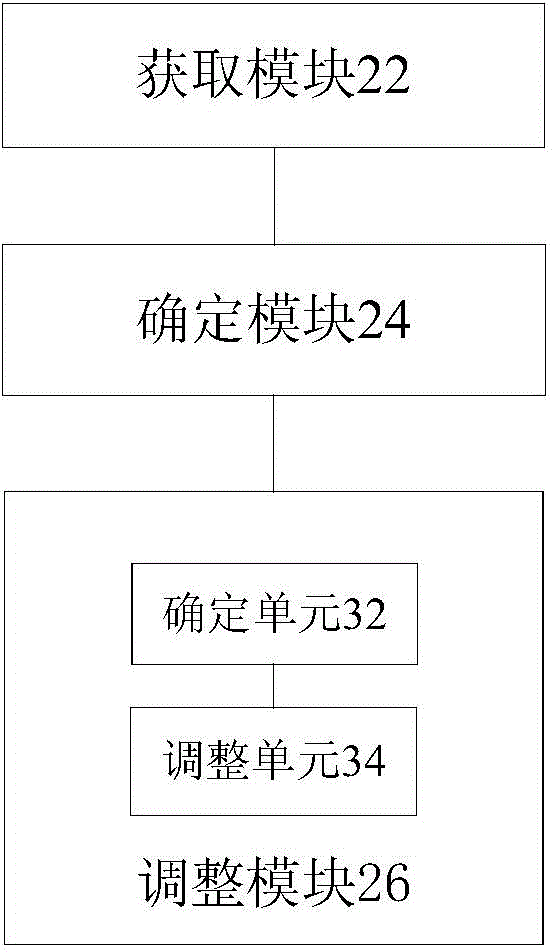Video frame rate adjusting method and device
An adjustment method and frame rate technology, applied in the video field, can solve problems such as extra power consumption, achieve the effect of reducing power consumption, reducing power consumption, and improving battery life
- Summary
- Abstract
- Description
- Claims
- Application Information
AI Technical Summary
Problems solved by technology
Method used
Image
Examples
Embodiment 1
[0029] In preferred embodiment 1, the status information includes the motion status of the terminal.
[0030] The sensor on the terminal can perceive the motion state of the terminal, and then adjust the frame rate of the video recording of the terminal according to the motion state of the terminal. For example, the motion state of the terminal may be determined according to the speed or acceleration of the terminal. In general, the faster the motion speed is, the higher the frame rate of the video needs to be in order to ensure the quality of the video. Preferably, when the terminal is in a relatively static state, a lower video frame rate can be set; when the terminal is in a relatively moving state, a higher video frame rate can be set.
[0031] In order to reduce the frequency of adjusting the video frame rate, the speed or acceleration can be divided into multiple ranges, and different video frame rates can be set for each different range. In this case, the above step S...
Embodiment 2
[0033] In the second preferred embodiment, the status information includes the light intensity of the environment where the terminal is located.
[0034] In a preferred embodiment, the light intensity of the environment where the terminal is located is determined according to the acquired data; and the frame rate of the video recording of the terminal is adjusted according to the light intensity of the environment where the terminal is located.
[0035] In this embodiment, a video frame rate adjustment device is also provided, which is used to implement the above method. What has been explained in the above method will not be repeated here. The names of the modules in the device below should not be understood. To limit the module, for example, the adjustment module is used to adjust the frame rate of the terminal video recording according to the state information, and can also be expressed as "a method for adjusting the frame rate of the terminal video recording according to th...
PUM
 Login to View More
Login to View More Abstract
Description
Claims
Application Information
 Login to View More
Login to View More - R&D
- Intellectual Property
- Life Sciences
- Materials
- Tech Scout
- Unparalleled Data Quality
- Higher Quality Content
- 60% Fewer Hallucinations
Browse by: Latest US Patents, China's latest patents, Technical Efficacy Thesaurus, Application Domain, Technology Topic, Popular Technical Reports.
© 2025 PatSnap. All rights reserved.Legal|Privacy policy|Modern Slavery Act Transparency Statement|Sitemap|About US| Contact US: help@patsnap.com



